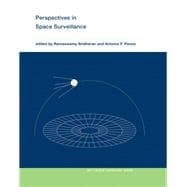In the 1950s, the United States and the Soviet Union raced to develop space-based intelligence gathering capability. The Soviets succeeded first, with SPUTNIK I in 1957. The United States began to monitor the growing Soviet space presence by developing technology for the detection and tracking of man-made resident space objects (RSOs) in near-Earth orbit. In 1972, the Soviet Union launched a satellite into deep space orbit, and the U.S. government called on MIT Lincoln Laboratory to develop deep space surveillance technology. This book describes these developments, as well as the later application of deep space surveillance technology to near-Earth surveillance, covering work at Lincoln Laboratory on space surveillance from 1970 to 2000.
The contributors, all key participants in developing these technologies, discuss topics that include narrow beam, narrow bandwidth radar for deep surveillance; wide bandwidth radar for RSO monitoring; ground-based electro-optical deep space surveillance and its adaptation for space-based surveillance; radar as the means of real-time search and discovery techniques; methods of analyses of signature data from narrow bandwidth radars; and the collision hazard for satellites in geosynchronous orbit, stemming initially from the failure of TELSTAR 401. They also describe some unintended byproducts of this pioneering work, including the use of optical space surveillance techniques for near-Earth asteroid detection.
Contributors
Rick Abbott, Robert Bergemann, E.M. Gaposchkin, Israel Kupiec, Richard Lambour, Antonio F. Pensa, Eugene Rork, Jayant Sharma, Craig Solodyna, Ramaswamy Sridharan, J. Scott Stuart, George Zollinger








